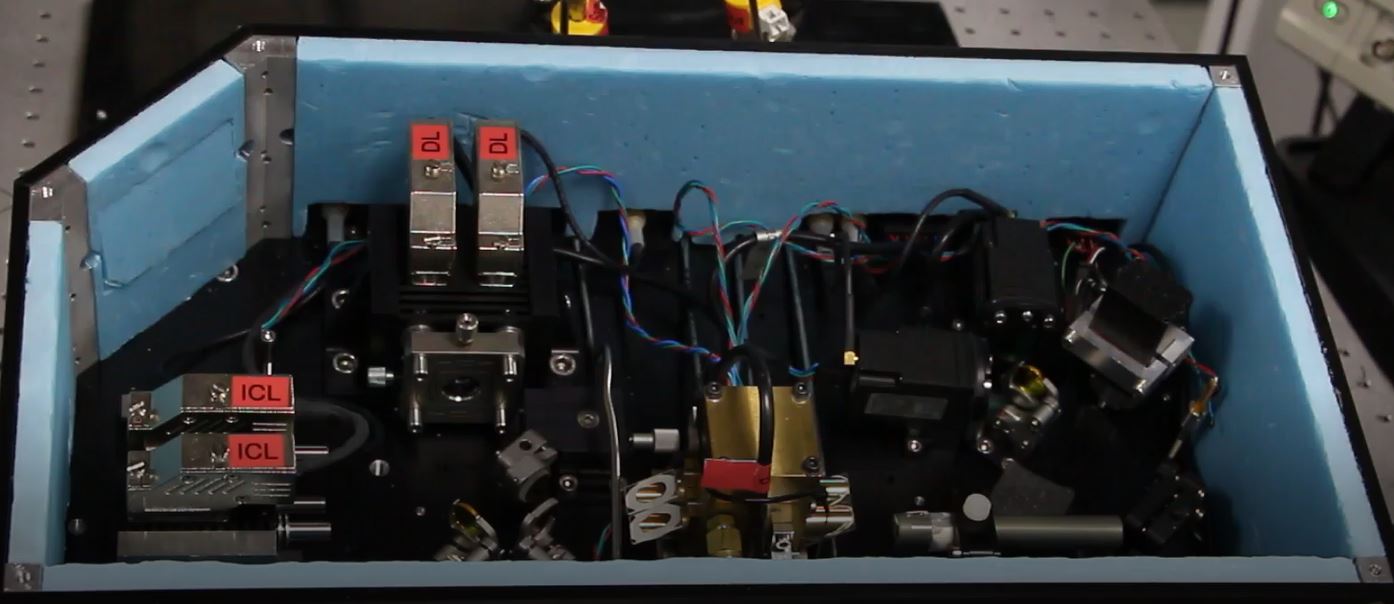What is your role in laser spectroscopy?
I lead a team developing pioneering laser spectroscopy technologies and applications in the mid infrared. I mainly focus on laser spectroscopy hardware and technology and how it can be applied to atmospheric sensing and the Space sciences, however I also develop novel applications for other sectors – such as the Laser Isotope Ratiometer (LIR) for non-invasive medical diagnostics.
What makes laser spectroscopy so versatile?
Essentially the laser is a probe of unique quality. It can scrutinise molecular bonds through molecule-light interactions. This is a generic tool: wherever you have molecular gas, laser spectroscopy can be used to interrogate the mixture. It is real time analysis, and without contact.
As laser light has the ability to travel fast and far, laser spectroscopy can give insight across a range of applications for different users: from a group of a few molecules at ultra-low temperature in a laboratory for fundamental physics and chemistry to a cloud within the interstellar medium for astronomers.
What is the future for laser spectroscopy?
Miniaturisation is one of many very exciting developments in laser spectroscopy and was one of the key aspects we pursued with the LIR, which we aim to develop into a handheld breath analyser for use in hospitals to diagnose sepsis.
Miniaturization unlocks many practical applications beyond laboratory use, as well as new measurement paradigms. You can start using laser spectroscopy in areas otherwise deemed impossible, such as on planetary landers where space and mass is heavily constrained, or in hospital ventilators. There are also many new technological developments in laser spectroscopy through new laser sources, new photonics components, and new processing tools. These new technologies enable scientific applications, but also commercial exploitation. Quantum applications with molecules (as opposed to atoms) is also a very exciting future prospect where laser spectroscopy is essential.
How did you develop the Laser Isotope Ratiometer?
It is a combination of existing principles of molecular spectroscopy together with new mid infrared photonic technology. It took about a year of work to develop the first lab prototype. Technically, the most difficult task was to achieve the level of accuracy needed for isotopic analysis. This was tough and required the development of accuracy improvement techniques to achieve this.
Why is it important to bring space research and technology back down to Earth?
Space research and technology development have highly demanding requirements, owing to the demanding environment of space. This means that outcomes from space research and development programmes are highly suited to solve demanding problems on the ground. I am a strong advocate of lowering barriers between disciplines to help innovation flourish and solve problems on our Earth.

Bringing space down to Earth: The work done at RAL Space isn't just restricted to exploring and understanding the space that surrounds our planet, it's also about feeding space science, technology and data back down to Earth. Our staff are involved in a number of exciting projects that have used their roots in space and satellite technology to develop products and services with important applications for life on Earth.
